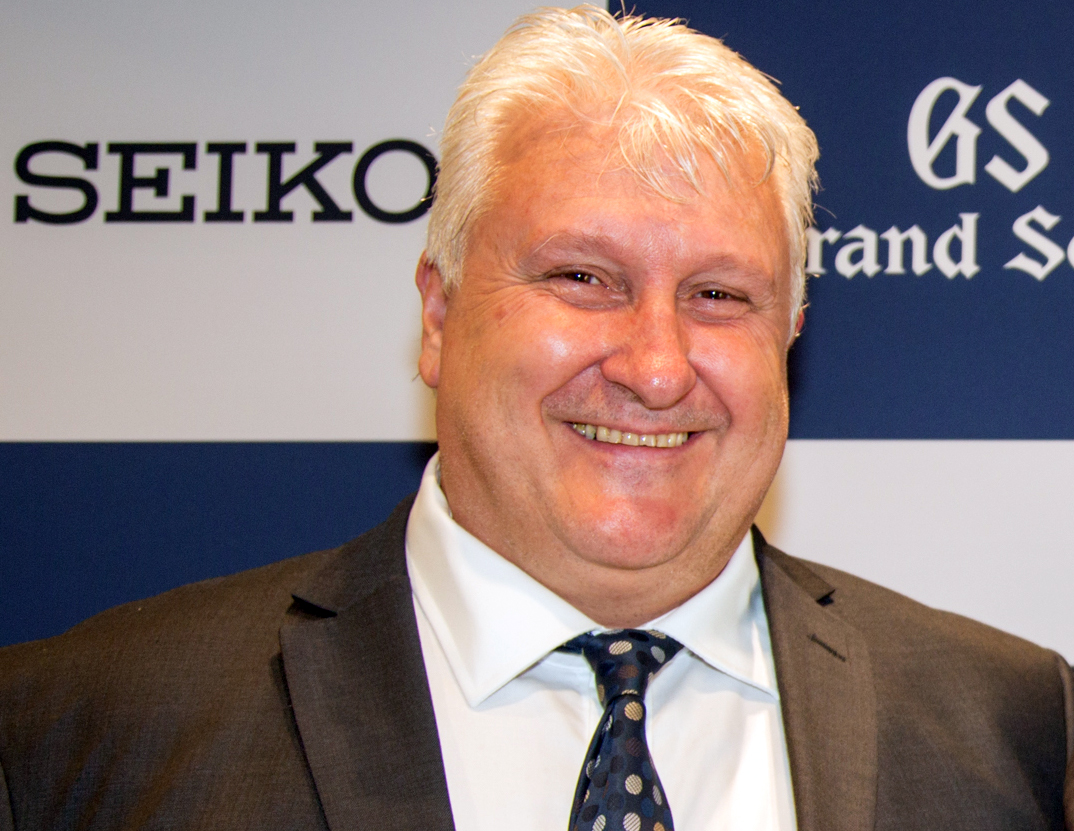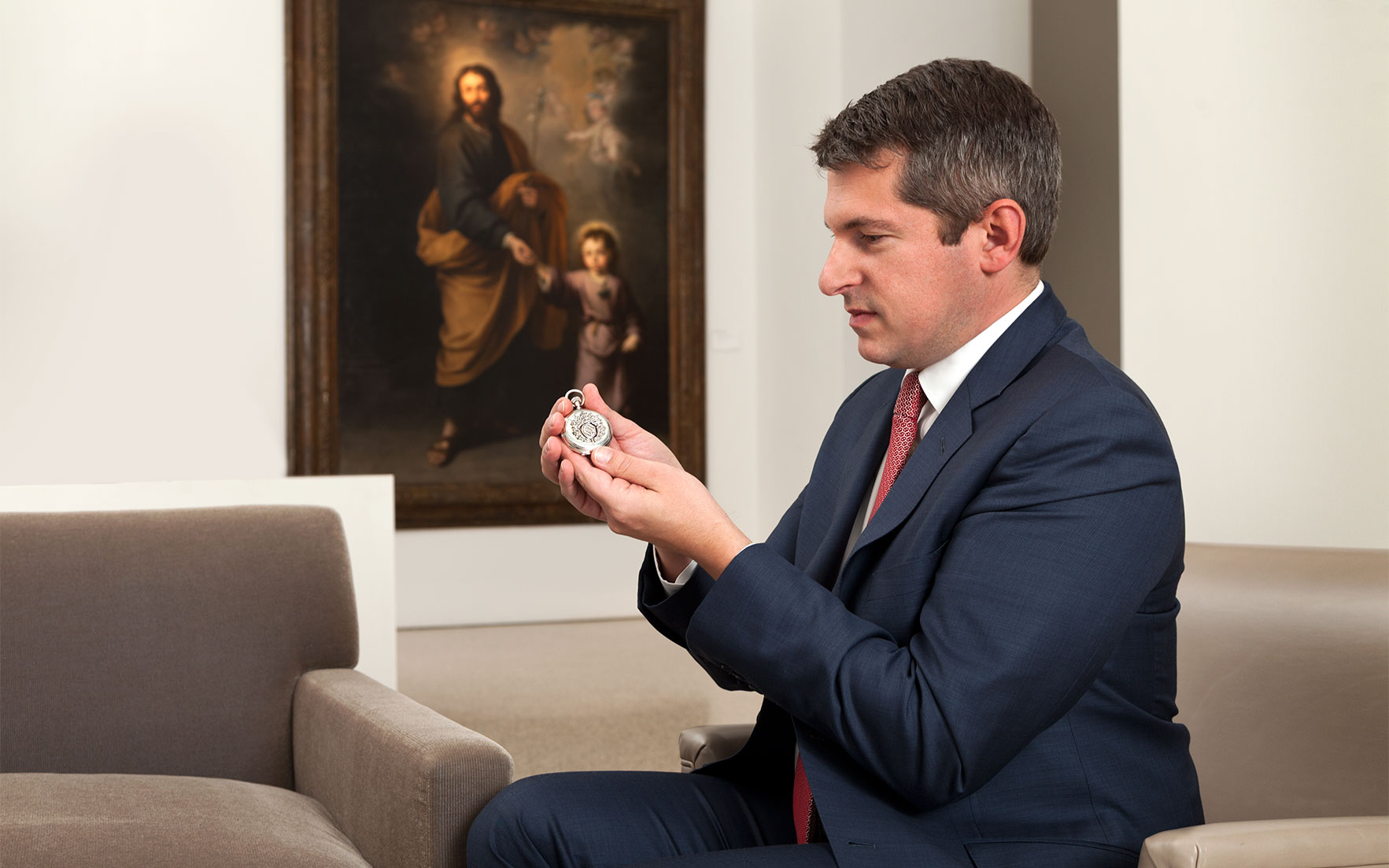John Reardon, Christie’s senior vice president and international head of watches, has spent over 20 years in the prestige watch industry, including senior roles at Sotheby’s, Patek Philippe and Tiffany & Co. His time has coincided with a period of dramatic change for the auction houses as they face competition from mushrooming pre-owned platforms such as Chrono24, Watchfinder and eBay. From being the only game in town for people trading top end timepieces 50 years ago, the auction houses are now minnows in a market worth, in Mr Reardon’s opinion, $8 billion per year. Exclusivity may suit these venerable institutions, but Christie’s has other ideas and wants to take the fight back to the upstarts as WatchPro’s editor Rob Corder discovered in this broad-reaching conversation.
James Christie, the founder of Christie’s auction house, conducted his first sale in London on 5 December 1766. Over 250 years later, the global business holds around 350 auctions annually in over 80 categories, including all areas of fine and decorative arts, jewelry, photographs, collectibles, wine, and more from 10 permanent sale rooms in London, New York, Paris, Geneva, Milan, Amsterdam, Dubai, Zürich, Hong Kong, and Shanghai.
Luxury watches have always been part of the mix because they are prized by the aristocrats and titans of industry that have worked with Christie’s for centuries to accumulate and liquidate assets from their estates.
Christie’s may be historic, but it is not afraid to modernize, and was an early pioneer in taking its auctions to the world via the internet, and more recently started holding online-only auctions for prestige timepieces. Its most recent sale: Christie’s Watches Online: Falling for Time in September, generated sales worth over $1.5 million including buyers’ premiums. Two Patek Philippe Nautilus models both sold for over $50,000 and a Rolex Daytona went for $47,000.
Modern pieces like the Nautilus and Daytona have been commanding spectacular prices on the secondary market for several years, and are responsible for the growing scale, sophistication and fierce competition between venerable auction houses with centuries of history and upstarts such as Chrono24, Ebay and Watchfinder.
“If you take all the major auction houses: Christie’s, Sotheby’s Bonhams, Phillips, Antiquorum, Heritage Auctions, the big Chinese players; if you take all of them together, we sell watches worth only $350 million per year. That is rather sad compared to the $8 billion annual market that we are part of [for pre-owned and vintage watches],” reveals John Reardon, Christie’s New York-based senior vice president and international head of watches.
The challenge and opportunity for Christie’s is to maintain its reputation for authenticity, trust, access to the rarest pieces in the world and the most active buyers while at the same time going toe-to-toe with the disruptive digital platforms.
Christie’s online-only auctions provide a bridge between the old and the new, and are teaching the auction house a huge amount about the scale of the opportunity to reach more customers. “Four years ago it was a vision of mine and the wider Christie’s team to go digital-only with a small portion of our business. Pure online auctions represents less than 1% of what we do, but it is also our most global platform in many ways. The biggest and most pleasant surprise with our online auctions is when we look at who the buyers are. We look through the people that win the auctions and the under-bidders and they are not people that we already know. They are new to us. The other thing that is new and a wonder is that women are buying online. If you go to watch auctions, you just do not see women bidding and buying, so it feels like these online auctions are opening up our business to a completely new half of the world,” Mr Reardon describes.
These online-only auctions have only just started to make their mark on Christie’s, which is still wedded to a model of trading in the very rarest and most expensive watches in the world. The internet is impacting this end of the market as well, not least with the marketing of blockbuster lots that come to auction. Last year’s sale of a Paul Newman Daytona owned by Paul Newman for $17 million is a case in point. Phillips marketed the watch on a global scale to the point where there cannot have been a single fan of the film star, his racing career or of Rolex that did not know the sale was coming up. Traditional auction catalogs — weighty and glossy — have microscopic distribution compared to this global digital onslaught, which could tell the story of the watch’s provenance in glorious multimedia detail.
The history of who has owned a vintage piece can be much more important than the watch itself. Mr Reardon recalls the sale of a faux pearl necklace owned by Jackie Kennedy, and worth no more than $200, selling for over $70,000 in 2010. A Patek Philippe 2497 owned by Haile Selassie sold for $2.9 million in 2017 after its story was beamed around the world via the internet and social media.

Mr Reardon and his team of 30 experts scour the globe for these blockbuster pieces, and they can find themselves in races with rival auction houses to secure them. “We are treasure hunters, and that is a very exciting part of our jobs. Every day around the world there are fresh leads and one in ten is exciting; one in a hundred is exceptional; and one in a thousand is something that keeps us up at night. One of the reasons I travel so much is that a piece might surface anywhere in the world and I will literally jump on the next plane to go and see it. We are running after pieces, our competitors are doing the same, and it is a truly global race,” he says.
It isn’t just the big auction houses chasing profits from the buying and selling of vintage and modern pre-owned watches. The whole market has been transformed by the digital disruptors, and their influence is being felt right at the apex of the global luxury watch industry pyramid.
Mr Reardon, who worked for Patek Philippe from 2001 to 2010, says the big brands have been fearful of how second hand watch sales will affect new watch sales for years. “Ten years ago, when I worked at Patek Philippe, I asked a certain executive what brand he was most concerned about. His answer surprised me. He said he was not concerned about other brands competing with Patek Philippe, he said he was concerned about vintage and pre-owned Patek Philippe competing with new models. He predicted ten years ago what we are seeing today,” he recalls.
Brands may have been obsessing over what is happening on the secondary market for over a decade, but there is little evidence they are about to change tactics and directly take part in it.
Mr Reardon thinks brands should engage more and bring pre-owned watches into the orbit of the authorised dealers. “I think we are going into an era of certified pre-owned from the brands. Brands will buy back their own pieces; restore them, finish them. Vacheron Constantin has been doing that. MB&F has just announced a programme going into that. AP is looking at it. It makes sense for some companies. Right now I do not think that the brands necessarily want to compete with the secondary market. I would say that many of them realise that the secondary market has to find a way to work in harmony with the retail market because they are both parts of the same machine,” he suggests.

